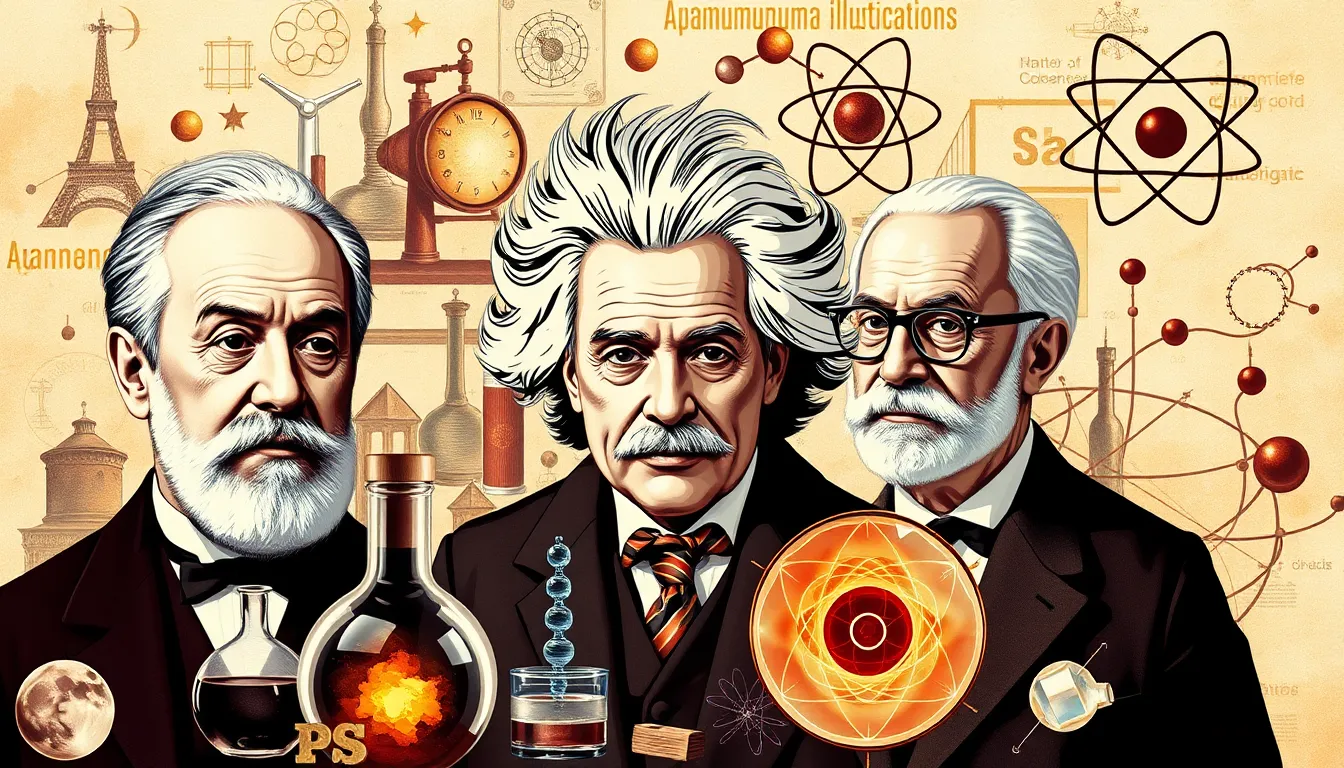Quantum mechanics isn’t just for the nerdy physicists in lab coats; it’s the wild party of the science world where particles dance to their own tune. Imagine a realm where things can be in two places at once, and cats can be both alive and dead—yes, we’re talking about Schrödinger’s famous feline! This isn’t just theoretical mumbo jumbo; it’s the foundation of modern technology, influencing everything from smartphones to MRI machines.
Table of Contents
ToggleOverview of Quantum Mechanics
Quantum mechanics describes the behavior of matter and energy at the atomic and subatomic levels. It diverges significantly from classical physics, introducing principles that challenge conventional understanding. Superposition illustrates this unique nature; particles can exist in multiple states at once, leading to complex behaviors.
Entanglement further exemplifies quantum phenomena. In this scenario, particles become interconnected in such a way that the state of one instantly influences the other, regardless of distance. This non-locality has profound implications for communication and information transfer.
The uncertainty principle, formulated by Werner Heisenberg, states that certain properties, such as position and momentum, cannot be precisely determined simultaneously. This principle underscores the limitations of measurement in quantum mechanics. Observing a particle inevitably alters its state, which contradicts classical expectations where measurements do not affect the observed.
Applications of quantum mechanics extend beyond theoretical exploration. Technologies like quantum computing leverage principles such as superposition and entanglement to perform computations exponentially faster than classical computers. This emerging field holds promise for solving complex problems previously deemed intractable.
Moreover, understanding quantum mechanics is essential for advancements in various technologies, including semiconductors, lasers, and quantum cryptography. Each application reflects the transformative power of quantum concepts, impacting everyday technology and research.
Researchers delve into quantum mechanics to uncover new technologies and deepen theoretical understanding. Such inquiries not only enhance scientific knowledge but also pave the way for innovations that reshape industries. Quantum mechanics continues to revolutionize perceptions of reality, elucidating the complex fabric of the universe.
Historical Development

Quantum mechanics emerged through a series of revolutionary ideas and experiments that reshaped scientific understanding. Early theories set the stage for monumental discoveries in the field.
Early Theories
Max Planck introduced quantization in 1900, suggesting energy is released or absorbed in discrete packets called quanta. Albert Einstein later expanded on this concept by explaining the photoelectric effect in 1905, demonstrating light’s particle-like properties. Niels Bohr further developed atomic models in 1913, proposing that electrons occupy quantized energy levels within atoms. These foundational theories crucially challenged classical physics, instigating a deeper investigation into atomic behavior and leading to significant advancements in scientific thought.
Key Experiments
Key experiments solidified quantum mechanics as a fundamental theory. The double-slit experiment, first performed by Thomas Young in 1801, revealed that light and particles exhibit wave-particle duality. This experiment showed particles interfered with themselves, indicative of wave behavior. In 1927, the Stern-Gerlach experiment illustrated the quantization of angular momentum, demonstrating how particles behave under magnetic fields. These experiments provided essential empirical evidence, validating quantum principles and enhancing comprehension of atomic interactions.
Fundamental Concepts
Quantum mechanics includes several fundamental concepts that challenge classical physics’ interpretations of the universe. Below are essential principles that define this fascinating field.
Wave-Particle Duality
Wave-particle duality describes how particles exhibit both wave-like and particle-like behaviors. This concept emerged from pivotal experiments such as the double-slit experiment. Light demonstrates these dual characteristics, behaving as a wave when passing through slits while creating interference patterns. Conversely, when observed, light acts as a stream of particles called photons. Electrons exhibit similar behavior, displaying wave-like patterns during experiments yet showing localized impacts when detected. This duality emphasizes the complexity of quantum entities and significantly alters the understanding of matter and energy interactions.
Quantum Superposition
Quantum superposition involves particles existing in multiple states at once until measured. An illustration of this principle is Schrödinger’s cat thought experiment, where a cat remains both alive and dead in a closed box until observed. This concept directly affects how quantum systems behave. During computation, qubits utilize superposition, enabling them to perform numerous calculations simultaneously. Superposition challenges classical deterministic views, suggesting that reality is inherently probabilistic. By emphasizing this principle, quantum mechanics reshapes perceptions of existence, expanding the understanding of how particles function at fundamental levels.
Applications of Quantum Mechanics
Quantum mechanics significantly impacts various technologies, fundamentally altering how society functions in numerous fields.
Quantum Computing
Quantum computing harnesses the principles of superposition and entanglement to revolutionize data processing. Qubits, unlike traditional bits, can represent multiple states simultaneously. This unique ability enables quantum computers to solve complex problems much faster than classical computers. For example, Shor’s algorithm allows for efficient factoring of large numbers, which has implications for cryptography. Researchers explore quantum algorithms to optimize logistics, improve machine learning, and enhance material science. As hardware develops, quantum systems promise to tackle tasks thought unmanageable, pushing the boundaries of computational power.
Quantum Cryptography
Quantum cryptography employs the uncertainty principle and entanglement to secure information transmission. Using techniques like quantum key distribution (QKD), it allows two parties to exchange encryption keys with unparalleled security. Eavesdropping attempts disrupt quantum states, alerting users to potential breaches. Major studies demonstrate QKD’s capability to create secure communication channels for finance and sensitive data transfer. Organizations increasingly adopt this technology to bolster cybersecurity measures. Ultimately, quantum cryptography represents a critical advancement in safeguarding digital information against emerging threats.
Challenges and Controversies
Quantum mechanics presents various challenges and controversies that deepen intrigue in the field. Many physicists engage in debates surrounding its interpretations and implications.
Interpretations of Quantum Mechanics
Numerous interpretations of quantum mechanics exist, each aiming to explain its peculiar findings. The Copenhagen interpretation advocates for wave function collapse upon measurement, emphasizing observer influence. In contrast, the Many-Worlds interpretation posits that every quantum event spawns a branching universe, eliminating wave function collapse. Other perspectives, like pilot-wave theory, introduce deterministic elements, suggesting particles follow defined pathways guided by a “pilot” wave. This diversity highlights the ongoing struggle to reach consensus on the fundamental nature of reality as described by quantum mechanics.
Quantum Paradoxes
Quantum paradoxes like Schrödinger’s cat provoke philosophical questions about reality. The thought experiment illustrates a cat existing in a superposed state of life and death until observed. Another paradox involves the Einstein-Podolsky-Rosen (EPR) phenomenon, where entangled particles correlate instantaneously despite vast distances, challenging classical ideas of locality. Such paradoxes push the boundaries of understanding, inviting scientific scrutiny and debate. Researchers explore these intriguing dilemmas to unravel the complexities inherent in quantum mechanics.
Quantum mechanics stands as a cornerstone of modern science reshaping how we perceive the universe. Its principles challenge traditional notions of reality while driving advancements in technology that impact daily life. As researchers delve deeper into its complexities they uncover new applications that promise to revolutionize industries and enhance our understanding of the fundamental nature of existence. The ongoing exploration of quantum mechanics not only fuels scientific inquiry but also invites philosophical contemplation about the very fabric of reality. The journey through this enigmatic field continues to inspire curiosity and innovation paving the way for future breakthroughs.




